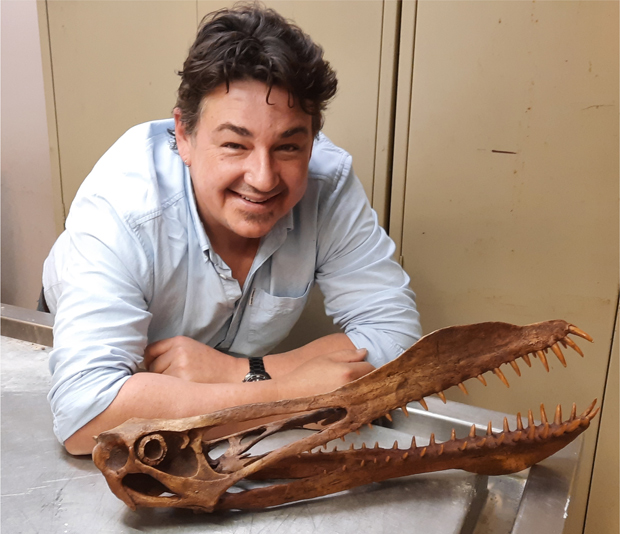A newly revealed pterosaur fossil in Australia is thrilling paleontologists in the country.
Named Thapunngaka shawi (meaning "Shaw's spear mouth" in the Indigenous Wanamara language), it was a truly fearsome creature with a huge metre (3-foot) long skull and a seven-metre (23 foot) wingspan (that's wider than a giraffe is tall).
Armed with around 40 teeth, the animal would've been ideally suited to hunting fish in the seas that once dominated the area. Not only is it the largest pterosaur ever found in Australia, it is an important—and rare—addition to the prehistoric history of this part of the world.
Not-so-frequent fossils
Much of the Australian landscape is desert and not an ideal place for dinosaur age fossils. (Getty Embed)
Of all of the continents in the world, only Antarctica has discovered less fossils from the age of dinosaurs than Australia. But that's not because dinosaurs didn't once live in this part of the world. They absolutely would have and in great numbers.
A big part of the reason why relatviely fewer fossils are found here comes down to geology—or how the earth has evolved there. So much of Australia is desert and this barren, open landscape is easily eroded. This means that most of layers of ground that would've contained fossils from the era of the dinosaurs has long since been worn away by winds and dust.
Hence, less fossils to find!
Magic jaw

Not a lot to go on! The original jaw fossil placed within the animal's likely skull shape. (Tim Richards/University of Queensland)
But when a fossil is found, it's definitely a time to celebrate! In this case, the fossilized jaw of Thapunngaka shawi was found in 2011 by a local fossil hunter named Len Shaw. After the curious specimen was discovered, the hard work really began.
Researchers at the University of Queensland had to piece together what the rest of this awesome creature looked like based on this one piece of the puzzle. It might seem like a stretch to put together an entire animal from a piece of jaw, but this is a big part of paleontology—especially since complete fossils are extremely rare, anywhere in the world.
Experts use information from other animals (both prehistoric and current) to figure out what the rest of the animal most likely would've looked like. It's a process that can take years. But the result is this amazing pterosaur that we're being introduced to today.
Watch the video below to hear researchers from the University of Queensland discuss this incredible animal!
 "Say cheese!" Tim Richards, a PhD candidate at the University of Queensland, poses with the pterosaur skull. (University of Queensland)
"Say cheese!" Tim Richards, a PhD candidate at the University of Queensland, poses with the pterosaur skull. (University of Queensland)









